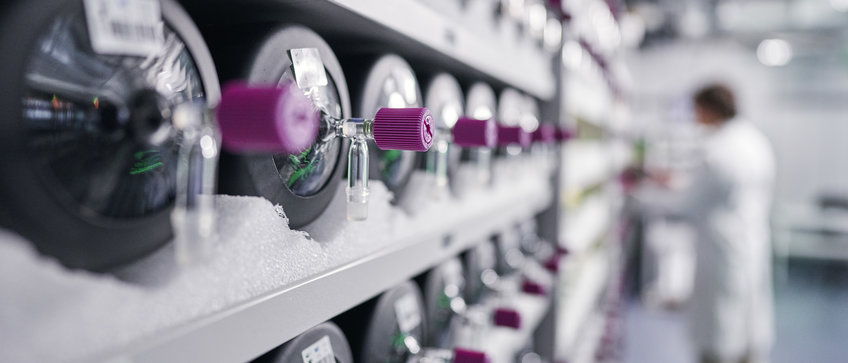
Flask Sampler
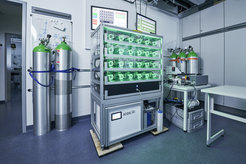
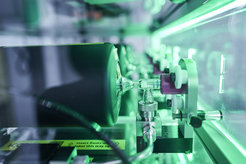
The targeted collection of air samples at suitable times for the respective purposes is made possible by an automatic sampling device (Flasksampler). This device enables sampling to be carried out
- at predetermined times,
- started by external signals when predefined conditions are fulfilled in an automated evaluation of continuous greenhouse gas measurements,
- started by external signals when weather forecast models predict air masses from a certain target sector.
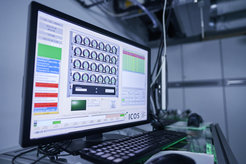
Up to 24 flasks can be installed in the flask sampler and registered by using barcodes on the flasks. After each flask change, the sampler automatically tests the leak tightness of the system. Standardized air sampling, including drying of the air, is fully automated, with various data (e.g. gas flow and pressure) being recorded by sensors. This data, linked to the respective sampling, is transmitted to our laboratory in an automated way. To minimize concentration changes due to wall effects, sampling is performed by air exchange, where sample air flows through the flasks at a constant overpressure. At a later stage, the flask pressure serves as an indicator for possible changes in the sample. A special feature of the samplers is the special regulation of the air flow during air sampling. The technique we developed allows to take air samples, which represent the mean air composition values during the one-hour sampling period. This allows more accurate comparisons with other measurement devices and is in accordance with the temporal resolution required for climate and weather models.
Flasks
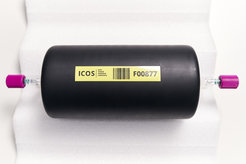
The glass sample containers (flasks) were developed by us together with the manufacturer for the purposes of ICOS. Each flask is thoroughly tested in our laboratory before it is used. Newly produced flasks and flasks that have been in contact with humid air are baked out for several days and pumped out at the same time. All flasks are filled with dry, well-defined transport air at a defined pressure before being shipped to the measuring stations. This allows early detection of any flask leaks and minimizes concentration changes due to wall interactions. The flasks are routinely monitored for potential defects.



